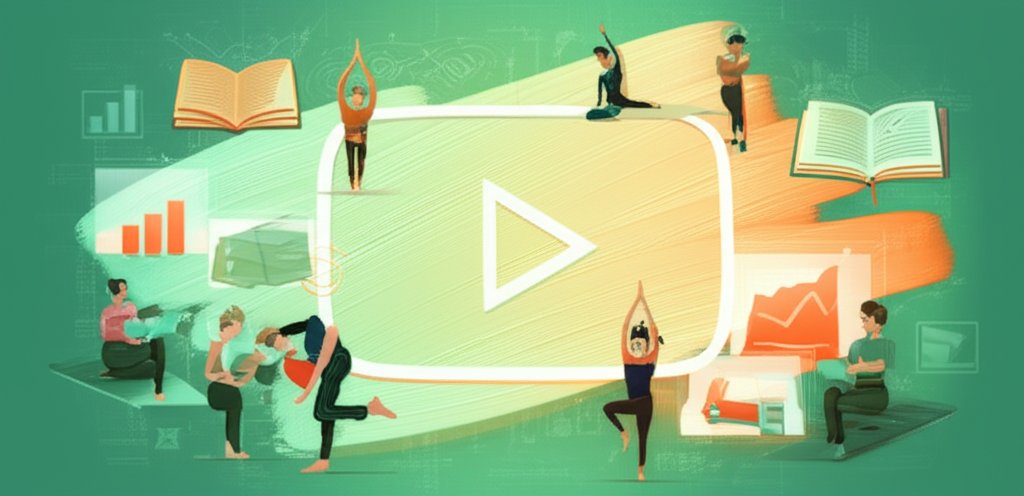Struggling to find the right self-improvement content on YouTube? It often feels like a chaotic mix of unrelated videos, making it tough to discover genuinely helpful resources. Understanding how YouTube’s categories work (and how they don’t work) is key to filtering the noise and finding the content you need.
At a glance:
- YouTube doesn’t have a specific “Self Improvement” category; creators have to choose from existing options.
- Common categories for self-improvement content include “Education,” “Howto & Style,” “People & Blogs,” and “Entertainment.”
- Searching using targeted keywords is more effective than relying on categories alone.
- Pay attention to the creator’s channel and the quality of their content, regardless of the chosen category.
- Leverage playlists to group related videos and create your own structured learning path.
The Category Conundrum: Why There’s No Dedicated “Self Improvement” Hub
YouTube’s category system is broad, designed to cover a massive range of content. There isn’t a dedicated “Self Improvement” category, forcing creators to select the closest fit. This leads to self-improvement videos being scattered across various categories, making discovery a challenge.
Think of it like this: a video on mindfulness could be categorized under “Education” if it teaches a specific technique, “Howto & Style” if it focuses on incorporating mindfulness into a daily routine, or even “Entertainment” if it’s presented in a lighthearted, comedic way.
Common Categories Where Self-Improvement Content Resides
While a dedicated category would be ideal, understanding the common choices made by creators helps narrow your search.
- Education: This category often hosts content focused on skill-building, learning new concepts, and personal development strategies. Think videos on productivity techniques, memory improvement, or understanding cognitive biases. Example: A video explaining the science of habit formation.
- Howto & Style: This category is popular for videos demonstrating practical techniques and lifestyle changes. Expect to find content on topics like building confidence, improving communication skills, or developing a healthier diet. Example: A video demonstrating 5 simple exercises to improve posture.
- People & Blogs: Many self-improvement influencers use this category to share personal stories, insights, and advice based on their own experiences. These videos often focus on motivation, mindset shifts, and overcoming challenges. Example: A vlog documenting a creator’s journey to overcome procrastination.
- Entertainment: Don’t dismiss this category! Some creators use humor and engaging storytelling to deliver self-improvement messages in an accessible way. Example: A comedy skit illustrating the importance of setting boundaries.
Keyword Kung Fu: Mastering the Art of the YouTube Search

Since categories aren’t reliable, mastering keyword search is crucial. Instead of just searching “self improvement,” be specific about what you’re looking for.
| General Term | Specific Keyword Example |
|---|---|
| Self Improvement | “how to overcome fear of public speaking” |
| Motivation | “best morning routine for productivity” |
| Personal Growth | “improve emotional intelligence at work” |
| Mental Wellness | “techniques for managing anxiety” |
| Pro Tip: Use long-tail keywords (longer, more specific phrases) to narrow your search and find more relevant results. For instance, instead of “productivity,” try “best productivity apps for students with ADHD.” |
Beyond the Category: Assessing Content Quality and Creator Credibility
Don’t judge a book by its cover (or a video by its category). Focus on the content itself and the creator’s expertise.
- Check the Creator’s Background: Do they have relevant qualifications, experience, or a proven track record? Are they presenting opinions as facts without evidence?
- Evaluate Content Accuracy: Is the information presented accurate and evidence-based? Do they cite sources or rely on anecdotal evidence?
- Look for Practical Advice: Does the video offer actionable steps you can implement immediately, or is it just theoretical discussion?
- Read the Comments: Pay attention to what other viewers are saying. Are they finding the information helpful and accurate? Are there any red flags raised in the comments section?
Level Up Your Learning: Creating Structured Playlists

YouTube playlists are your secret weapon for creating a personalized self-improvement curriculum. Group related videos together to create a structured learning path.
- Identify Your Learning Goals: What specific areas of self-improvement do you want to focus on (e.g., time management, stress reduction, communication skills)?
- Search for Relevant Videos: Use targeted keywords to find high-quality content that aligns with your goals.
- Create Playlists: Create separate playlists for each area of focus (e.g., “Time Management Strategies,” “Stress Reduction Techniques”).
- Add Videos to Playlists: Add the videos you find to the appropriate playlists.
- Organize Playlists: Arrange the videos in a logical order, starting with introductory concepts and progressing to more advanced topics.
- Review and Update: Regularly review your playlists to ensure the content is still relevant and add new videos as you discover them.
Looking for tools to help you implement what you learn on YouTube? Level up your life now and explore apps designed to support your self-improvement journey.
Practical Playbook: Quick-Start Guide to Finding Great Content
Here’s a simple process to cut through the confusion:
- Define Your Goal: What specific outcome do you want? (e.g., “Reduce procrastination”, “Improve sleep quality”)
- Keyword Blast: List 5-7 very specific keywords related to your goal. (e.g., “time blocking tutorial adhd”, “sleep hygiene tips for insomnia”)
- Initial Search: Run each keyword, open the top 5-7 videos in new tabs.
- Quality Filter: Close tabs that are poorly produced, feel scammy, or lack specific advice.
- Action Audit: Of the remaining videos, which give you 2-3 immediately actionable steps?
- Playlist Power: Add the top 2-3 videos to a dedicated playlist.
Quick Answers: Clearing Common Misconceptions
Q: Is content in the “Education” category always the most reliable?
A: Not necessarily. While “Education” often implies factual content, it’s still crucial to assess the creator’s credibility and the accuracy of the information presented. Look for evidence-based advice and avoid relying solely on anecdotal evidence.
Q: Should I avoid videos in the “Entertainment” category?
A: Not at all! Many creators in the “Entertainment” category use humor and engaging storytelling to make self-improvement concepts more accessible and relatable. However, be sure to discern entertainment from actual advice.
Q: Can I rely solely on YouTube’s algorithm to recommend relevant videos?
A: While YouTube’s algorithm can be helpful, it’s not always accurate. It’s best to actively search for content and curate your own playlists to ensure you’re getting the information you need.
Q: What if a video contradicts information I’ve heard elsewhere?
A: Consider the source. If the video presents a dissenting viewpoint, research the information further. Look for evidence-based sources and consult with experts in the field to form your own informed opinion.
Getting Started: Your Next Steps
Don’t get bogged down in the category chaos! Instead, use this knowledge to refine your search strategy and curate a personalized self-improvement experience on YouTube. Start with a specific goal, use targeted keywords, assess content quality, and build structured playlists. The power to transform your life is at your fingertips – now go find it!
- Doctor Work Life Balance: Proven Strategies for Physician Well-being - November 20, 2025
- Find Your Work-Life Harmony: Quotes for a Fulfilling Life - November 18, 2025
- CRNA Work-Life Balance: Strategies for a Healthier Lifestyle - November 16, 2025
















